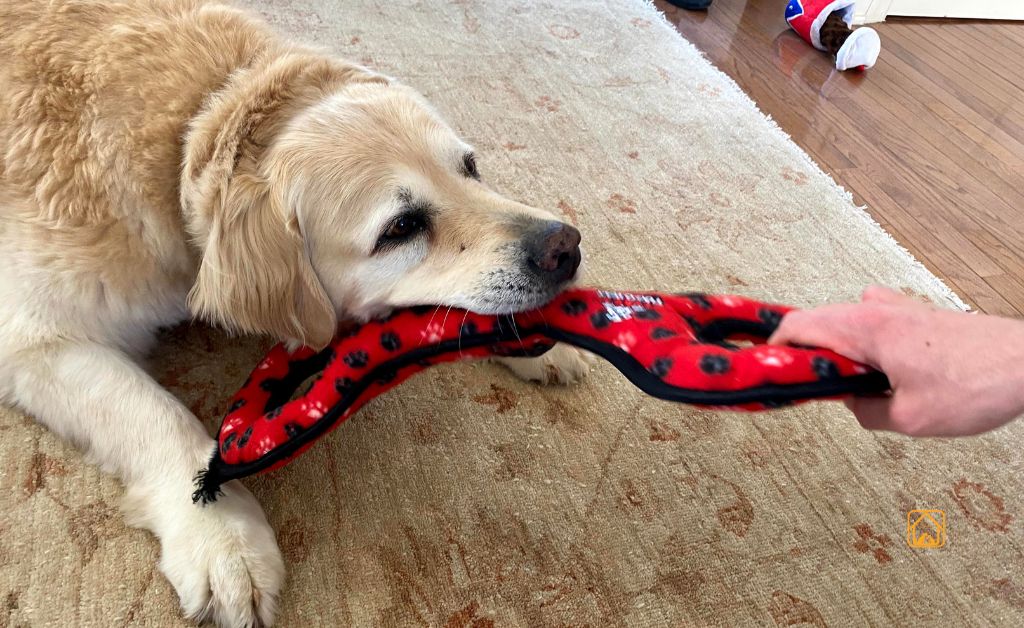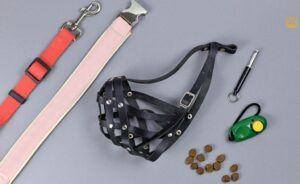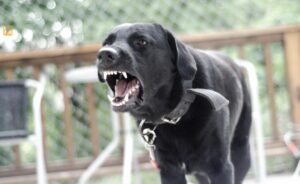In this guide, you’ll learn how to teach a dog to leave it step by step, using clear, kind methods that work in real-life situations. Whether you’re training a puppy or an older dog, these tips will help you feel more in control and your dog stay safe.
Why Teaching the ‘Leave It’ Command Is Essential for Dog Safety
Imagine your dog sniffing out a piece of chocolate or a pill on the ground before you even spot it. Scary, right? The ‘leave it’ command is a lifesaver in these everyday moments. Teaching a dog to leave it helps prevent them from eating dangerous foods, chewing on toxic plants, or picking up harmful objects during walks.
But it’s not just about what goes in their mouth. ‘Leave it’ also stops dogs from chasing after things they shouldn’t, like a squirrel, a plastic bag, or even another dog’s toy. I’ve seen so many dogs stay safe simply because their pet parent took the time to work on “leave it” command training. It builds impulse control, boosts your bond, and gives you peace of mind knowing you can redirect your dog’s curiosity when it matters most.
Understanding the ‘Leave It’ Command vs. ‘Drop It’ and Other Cues
‘Leave it’ and ‘drop it’ might sound similar, but they serve different purposes in dog training. When you teach a dog to leave it, you’re asking them to avoid touching or picking up something in the first place, think of it as a preventative cue. On the other hand, ‘drop it’ tells your dog to let go of something they’ve already grabbed.
There’s also ‘off,’ which is used for getting dogs off furniture or people, not for ignoring objects. Knowing these differences makes your training clearer and avoids confusion. Trust me, it helps keep your dog safe and your instructions consistent.
Preparing for Leave It Training: Tools, Treats, and Environment
Before you dive into teaching “leave it” to your dog, gather your supplies. You’ll want a handful of tasty, small treats (think pea-sized), a clicker if you use clicker training, and a leash for early sessions. Choose a quiet, distraction-free spot, your living room or kitchen works great for the first few lessons.
- High-value treats for motivation (tiny bits of cheese, chicken, or commercial dog treats)
- Leash and collar/harness for control (especially with puppies!)
- Clicker (optional, but helpful for marking the right moment)
- Calm environment, turn off the TV, keep kids and other pets out for now
Having your tools ready means you can focus on your dog’s success, not fumbling for a treat while your pup goes for the prize!
Step-by-Step Guide: Teaching ‘Leave It’ from Basics to Advanced
Teaching your dog the “leave it” command is a game-changer for everyday safety and peace of mind. Whether it’s a dropped pill, a sharp object, or food that’s not meant for dogs, this skill teaches your pup self-control. Here’s a simple, real-world approach to training “leave it” from the ground up.
Step 1: Introduce the Concept with a Closed Fist
Sit on the floor with your dog and place a treat in your closed hand. Naturally, your dog will sniff, lick, or paw at your hand to get to the treat. Don’t say anything yet, just wait. The moment your dog backs off or even looks away, say “Yes!” or click (if you use a clicker), and give a treat from your other hand. This teaches them that ignoring the treat gets the reward, not grabbing for it.
Step 2: Add the Verbal Cue
Once your dog consistently backs off from your closed fist, begin saying “leave it” right before you present your hand. The timing is important here cue, then show. Keep rewarding only when your dog resists the temptation.
Step 3: Progress to an Open Hand
Now, raise the challenge. Show the treat on your open palm. If your dog tries to grab it, quickly close your hand. Wait again. When your dog looks away or pauses, mark and reward from the other hand, not the temptation treat. This reinforces the idea that resisting still pays off, just from a different source.
Step 4: Place Treats on the Floor
Place a treat on the floor and cover it with your hand. Say “leave it.” When your dog ignores the treat or looks at you, reward with a different one. Slowly uncover the treat to make it more tempting, and only reward if your dog continues to ignore it. If they lunge, calmly cover it again and try a shorter time.
Step 5: Practice with Real-Life Items
Time to move beyond treats. Use a toy, tissue, or item your dog might find on a walk. Always supervise, and never use anything dangerous during training. Reward ignoring the object and praise calm behavior. It’s so heartwarming when your dog starts checking in with you before approaching something!
Step 6: Gradually Add Distance and Duration
Ask your dog to “leave it” while stepping back or waiting longer. These mini-challenges teach patience. Start small and build slowly. If your dog breaks focus, no worries, just try again with a shorter time or less distance.
Step 7: Take It on the Road
Take the command on walks or into new environments. Keep your dog on a leash, and bring high-value treats. Whether it’s a chicken bone, a squirrel, or another dog, “leave it” helps keep your walks stress-free and safe. Celebrate every success, this is one of the most practical skills you’ll ever teach your dog.
Using Hand Signals, Clicker Training, and Release Cues
Many dogs respond well to hand signals, try holding your palm out, facing your dog, as a visual “leave it.” Pairing this with your verbal cue can make your command clearer, especially in noisy places.
Clicker training is fantastic for marking the exact moment your dog does the right thing. Every “click” means “Yes! That’s what I wanted.” Don’t forget to teach a release cue (like “okay!”) so your dog knows when they’re free to explore again. It helps prevent confusion and builds trust.
Generalizing ‘Leave It’: Training with Distractions, Walks, and High-Value Items
Your dog might ace training at home but freeze up outside. That’s normal! Start in your yard, then practice near open doors, finally moving to walks with real-world distractions, think food scraps, squirrels, or moving bikes.
- Reward your dog for ignoring items and distractions, not just food.
- Gradually increase the challenge, try “leave it” with favorite toys or high-value treats.
- Don’t rush. If your dog struggles, go back to an easier level.
I remember a client whose Labrador would ignore pizza crusts on the sidewalk after a month of steady practice. That “aha!” moment is worth every bit of patience.
Leave It for Puppies: Special Tips and Considerations
Puppies are curious little explorers, everything goes in their mouth! Puppy leave it training should be short, fun, and full of high-value treats. Start in quiet spaces and be extra patient. Puppies learn best with gentle, positive methods, so never punish for mistakes. Instead, celebrate small wins and keep sessions under five minutes.
- Use soft, easy-to-swallow treats
- Practice daily, but keep it brief
- Be ready to “trade”, swap forbidden items for something better
Remember, your puppy won’t master leave it overnight. But every practice session builds safety skills for life.
Common Mistakes and Troubleshooting Leave It Training
Even with the best intentions, some pet parents hit bumps along the way. Here are classic mistakes and how to fix them:
- Repeating the cue: Only say “leave it” once, otherwise your dog learns to ignore the first few times.
- Using the same treat as the temptation: Always reward with something different (and better!) than what they’re supposed to leave.
- Moving too fast: If your dog keeps failing, go back to an easier step.
- Getting frustrated: Dogs sense your mood! Stay positive and patient.
- Training with too many distractions, too soon: Set your dog up for success by keeping things simple at first.
If your dog just isn’t getting it, try lowering the value of the temptation or practicing in a quieter spot. Sometimes, the tiniest adjustment makes all the difference.
FAQs About Leave It Command Training
How long does it take to teach a dog to leave it?
Most dogs start understanding the basics in a week or two with daily practice. Mastering leave it with distractions might take several weeks or longer. Every dog learns at their own pace, consistency is key.
Can I use the leave it command for things other than food?
Absolutely! ‘Leave it’ works for food, toys, trash, other animals, even people. Once your dog understands the concept, you can generalize it to almost anything you want them to avoid.
What’s the difference between ‘leave it’ and ‘drop it’?
‘Leave it’ means don’t touch or pick up the item. ‘Drop it’ means let go of something already in the mouth. Both commands are useful for safety and good manners.
My dog only listens at home. How do I get them to respond outside?
Practice in gradually more distracting environments. Start near open doors, then your yard, then on walks. Use high-value treats and keep sessions short and positive.
Should I use punishment if my dog ignores ‘leave it’?
No. Positive reinforcement leads to better results. If your dog struggles, return to an easier step and reward success. Punishment can harm your bond and slow learning.
What if my puppy keeps grabbing things during training?
Puppies are naturally mouthy! Use gentle redirection and always have safe toys or treats to swap. Be patient and keep sessions fun and short.
Can I teach an older dog to leave it?
Yes! Dogs of any age can learn the leave it command. Older dogs may need more practice, but positive reinforcement works at any stage of life.
Conclusion
Teaching a dog to leave it isn’t just a party trick, it’s a real-life safety net. With a little patience, the right steps, and lots of encouragement, you’ll give your dog a skill that could save their life. Ready to start? Grab some treats and let the learning begin!



